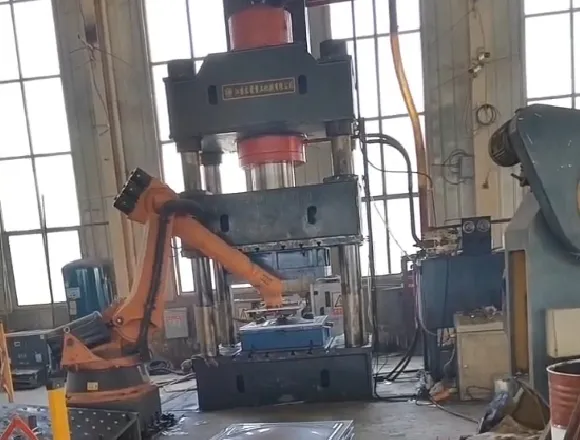loading...
- No. 9, Xingyuan South Street, Dongwaihuan Road, Zaoqiang County, Hengshui, Hebei, China
- admin@zjcomposites.com
- +86 15097380338
- Welcome to visit our website!
Innovative Applications and Benefits of Fiber Reinforced Polymer Bars in Modern Construction Techniques
The Advantages of Fiber-Reinforced Polymer Bars in Modern Construction
In the evolving world of construction and engineering, Fiber-Reinforced Polymer (FRP) bars are gaining traction as a superior alternative to traditional reinforcing materials such as steel. Crafted from a combination of fibers—typically glass, carbon, or aramid—embedded in a polymer matrix, FRP bars offer a multitude of benefits that make them increasingly desirable for various construction applications.
Strength and Durability
One of the most compelling advantages of FRP bars is their exceptional strength-to-weight ratio. These bars are incredibly lightweight compared to traditional materials, which simplifies handling and transportation. Despite their lightness, FRP bars maintain substantial tensile strength, which is crucial for reinforcement in concrete structures. Furthermore, they are highly resistant to environmental factors, including corrosion from chemicals, moisture, and atmospheric conditions. This resistance significantly extends the lifespan of structures, particularly in harsh environments such as marine locations or industrial settings.
Corrosion Resistance
Corrosion is a significant issue for traditional steel reinforcement, especially in areas susceptible to moisture and chemical exposure. Steel can rust and deteriorate over time, leading to costly repairs and reduced structural integrity. In contrast, FRP bars are immune to corrosion, making them an ideal choice for applications in corrosive environments. The lack of corrosion also translates to lower maintenance costs and longer service life for the structures in which they are embedded.
Non-Magnetic and Non-Conductive Properties
Another unique feature of FRP bars is their non-magnetic and non-conductive properties. This characteristic makes them suitable for specialized applications such as in hospitals, laboratories, and data centers where magnetic interference is a concern. Non-conductivity also ensures that the bars do not conduct electricity, reducing the risk of accidents in applications where electrical conductivity is a potential hazard.
fiber reinforced polymer bars

Design Flexibility
FRP bars offer unparalleled design flexibility, allowing engineers and architects to create innovative solutions that may be impractical with traditional materials. The versatility in their manufacturing means they can be produced in a variety of shapes and sizes to meet specific project requirements. This adaptability enables the construction of lighter and more efficient designs, optimizing the use of materials while enhancing aesthetic appeal.
Sustainability
In an era where sustainability is paramount, FRP bars represent an environmentally friendly option in construction. The production of these materials typically requires less energy compared to steel manufacturing, which often involves high-temperature processes. Additionally, the longevity and durability of FRP bars contribute to more sustainable building practices by extending the life cycle of structures and reducing the need for frequent repairs and replacements.
Cost-Effectiveness
While the initial cost of FRP bars may be higher than traditional steel, the long-term benefits often outweigh the initial investment. The reduced maintenance costs, decreased material weight leading to lower transport costs, and the extended lifespan of FRP-reinforced structures contribute to overall cost savings in building projects. Additionally, the potential for fewer repairs and replacements enhances their appeal from a financial perspective.
Conclusion
In conclusion, Fiber-Reinforced Polymer bars represent a significant advancement in construction materials. Their unique properties, including strength, durability, corrosion resistance, non-magnetic and non-conductive nature, design flexibility, and sustainability, position them as an ideal choice for modern construction projects. As the construction industry continues to evolve, embracing innovative and efficient materials like FRP bars will be essential for meeting the demands of future infrastructure development and ensuring longevity and safety in our built environment.
-
GRP Structures: The Future of Lightweight, High-Performance EngineeringNewsJun.20,2025
-
FRP Water Tank: High-Performance Storage for Corrosive and Clean Water SystemsNewsJun.20,2025
-
FRP Square Tube: The New Industry Standard for Chemical and Structural ApplicationsNewsJun.20,2025
-
FRP Pultruded Profiles: The Ultimate Choice for Lightweight Structural StrengthNewsJun.20,2025
-
FRP Handrails: The Safer, Smarter, and Stronger Choice for Modern InfrastructureNewsJun.20,2025
-
FRP Grating: The Smart Solution for Durable, Lightweight Industrial FlooringNewsJun.20,2025
-
Why Choose a Galvanized Water Tank for Your Storage NeedsNewsMay.21,2025
